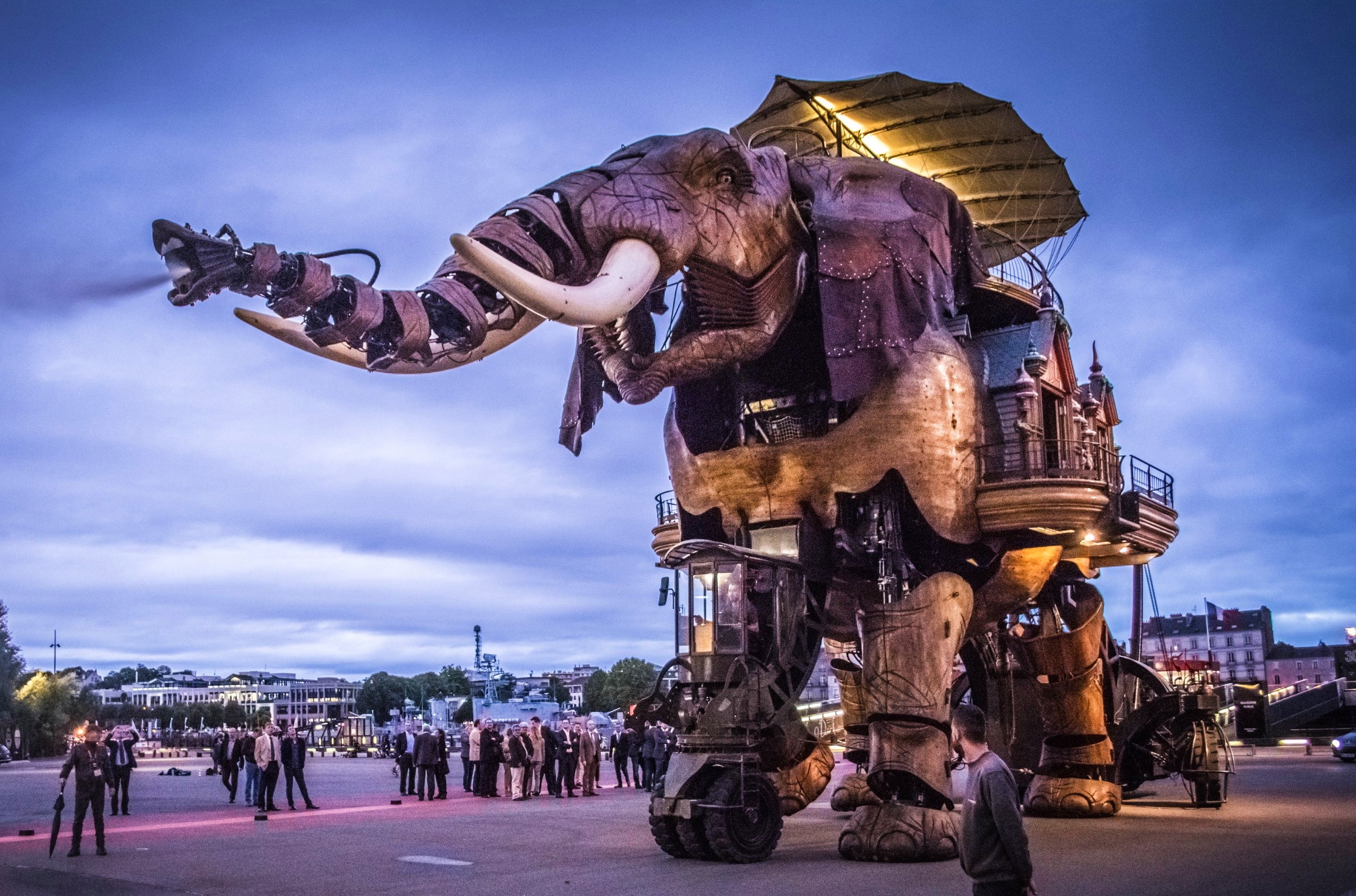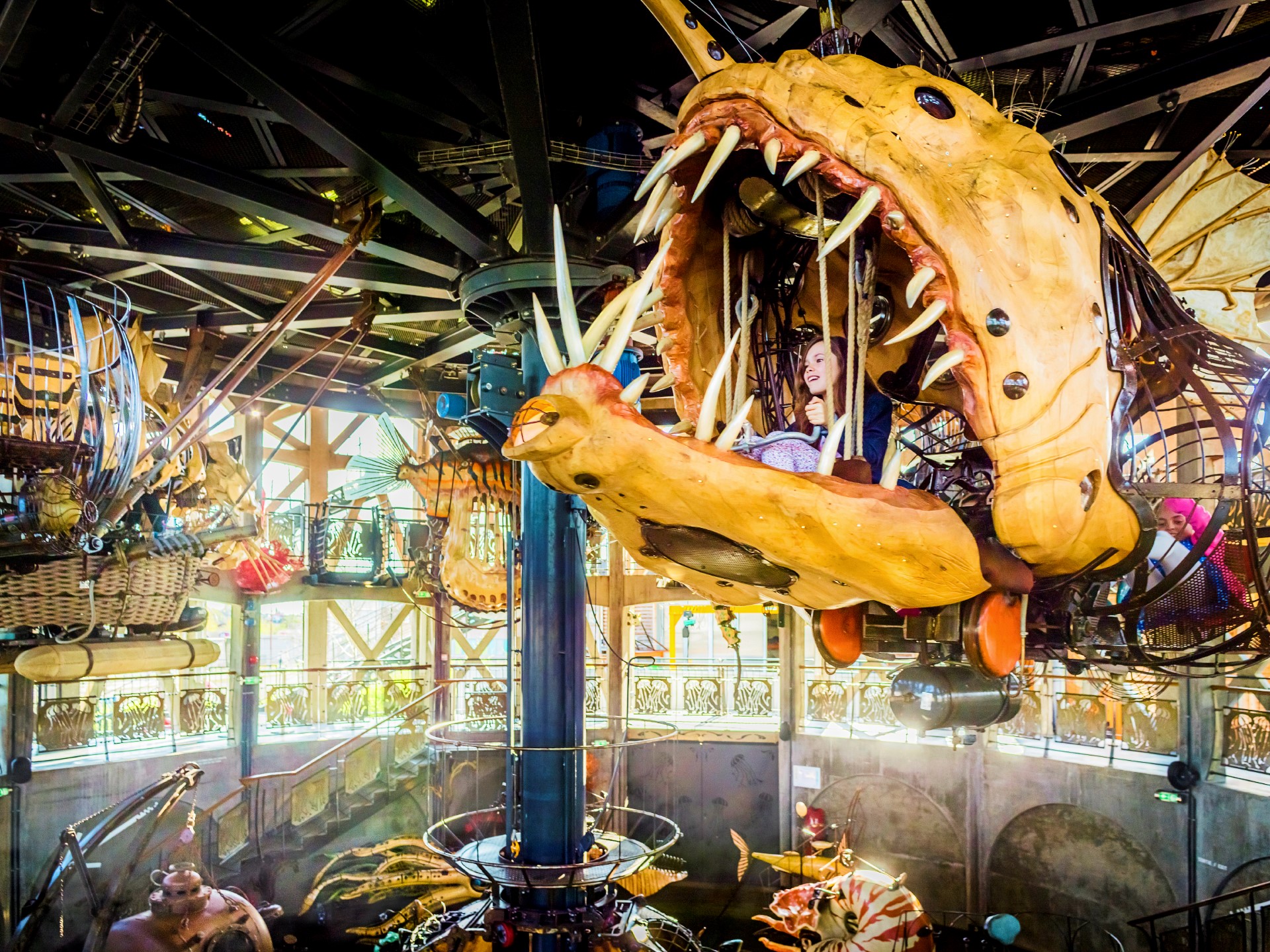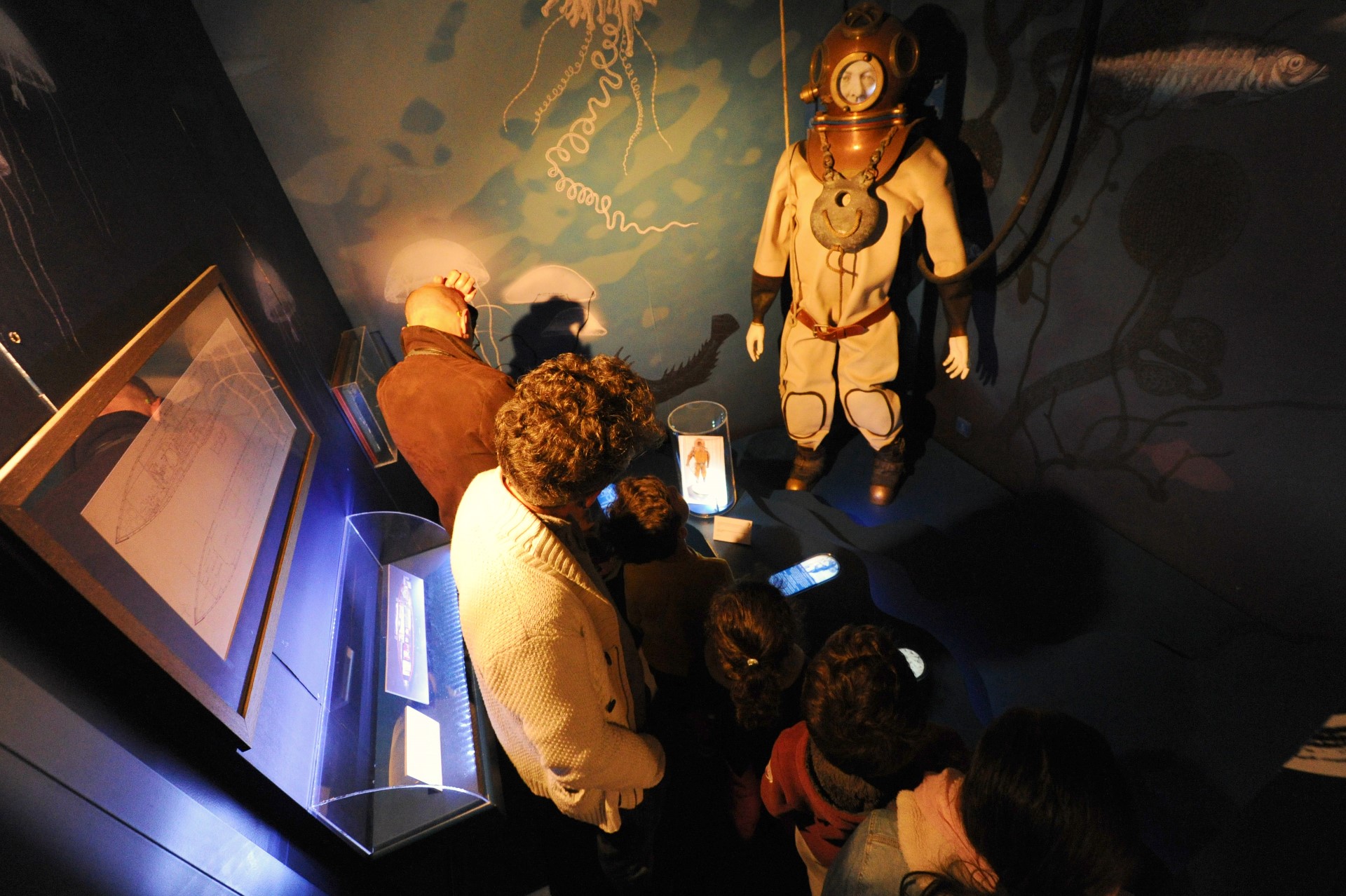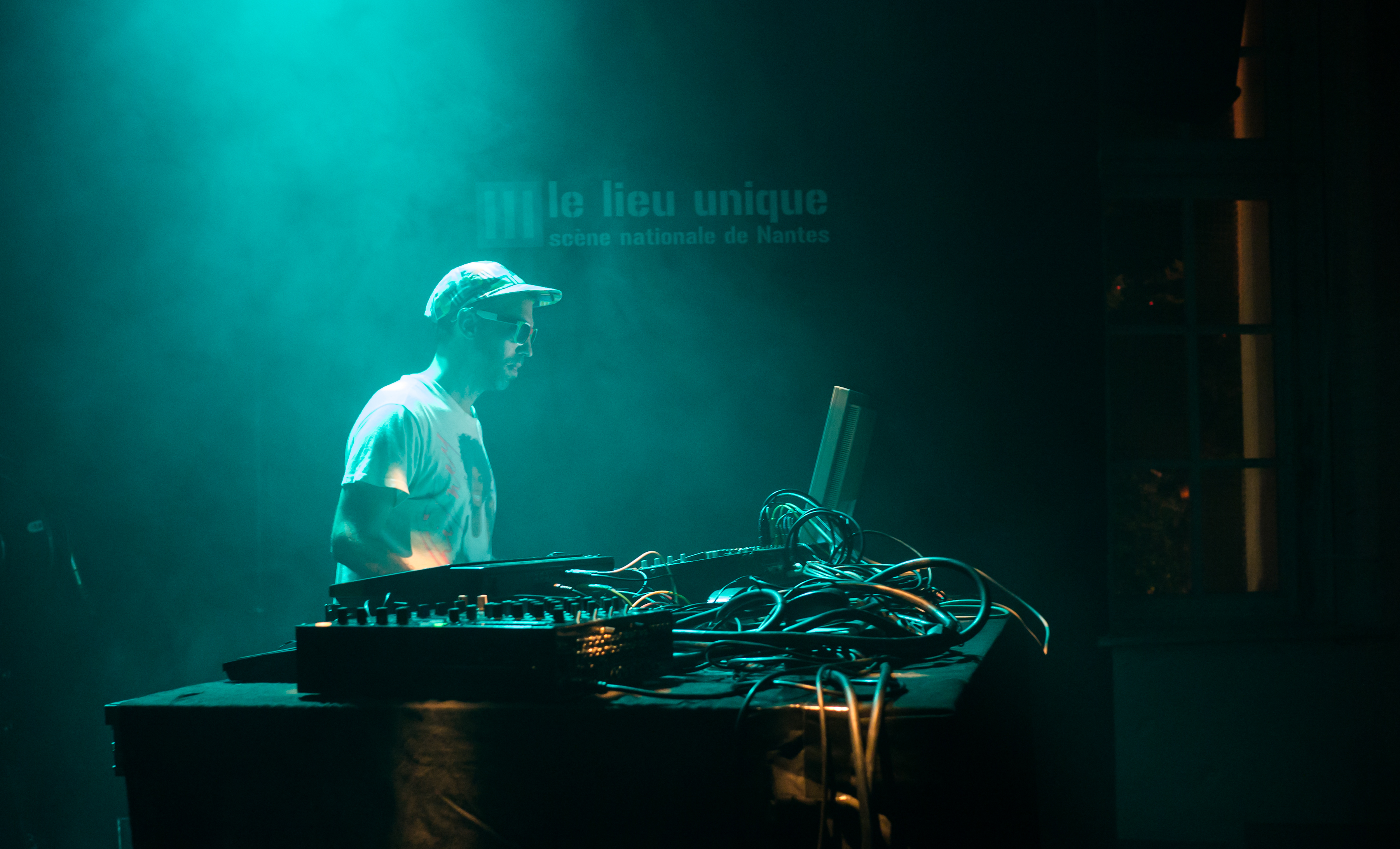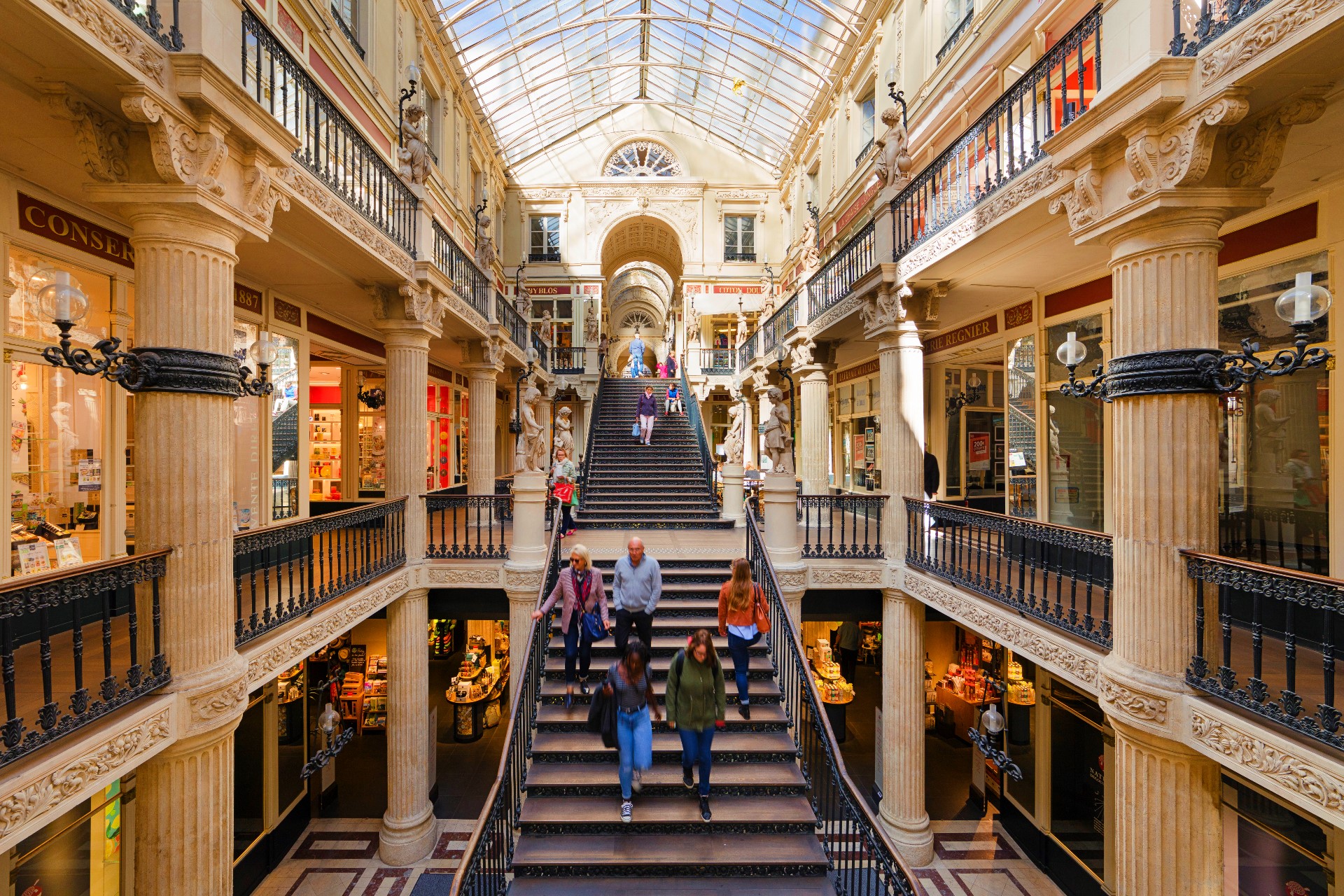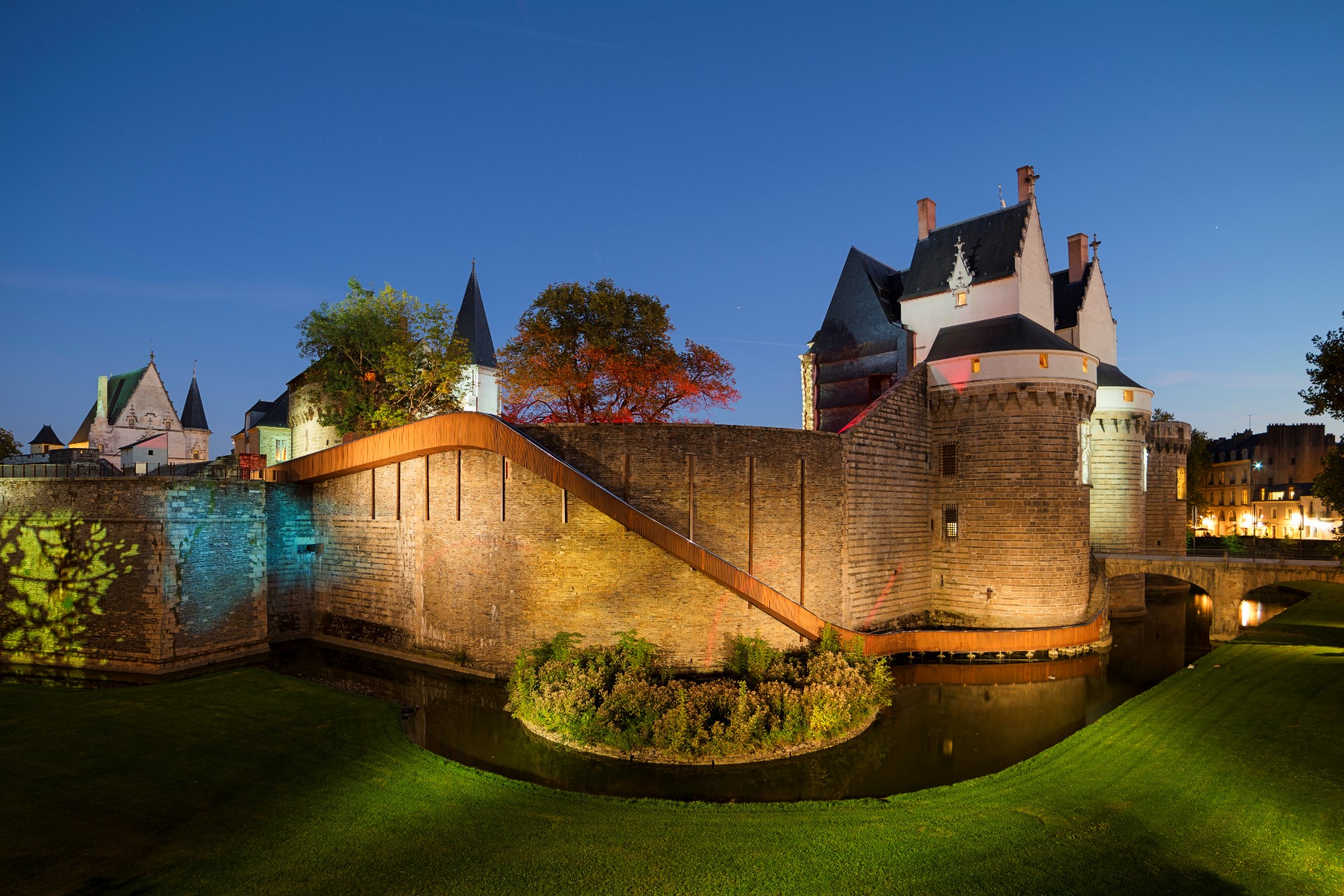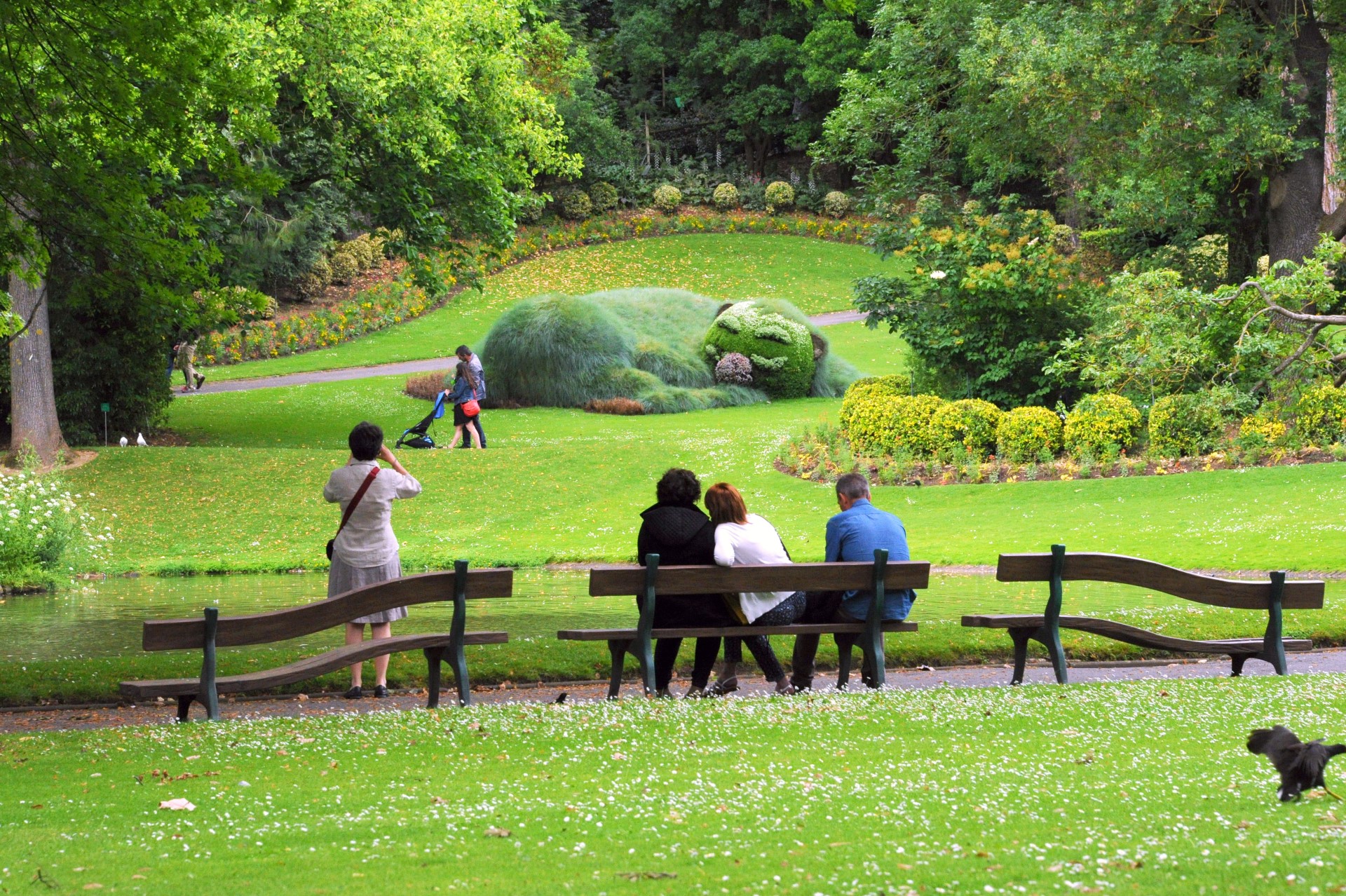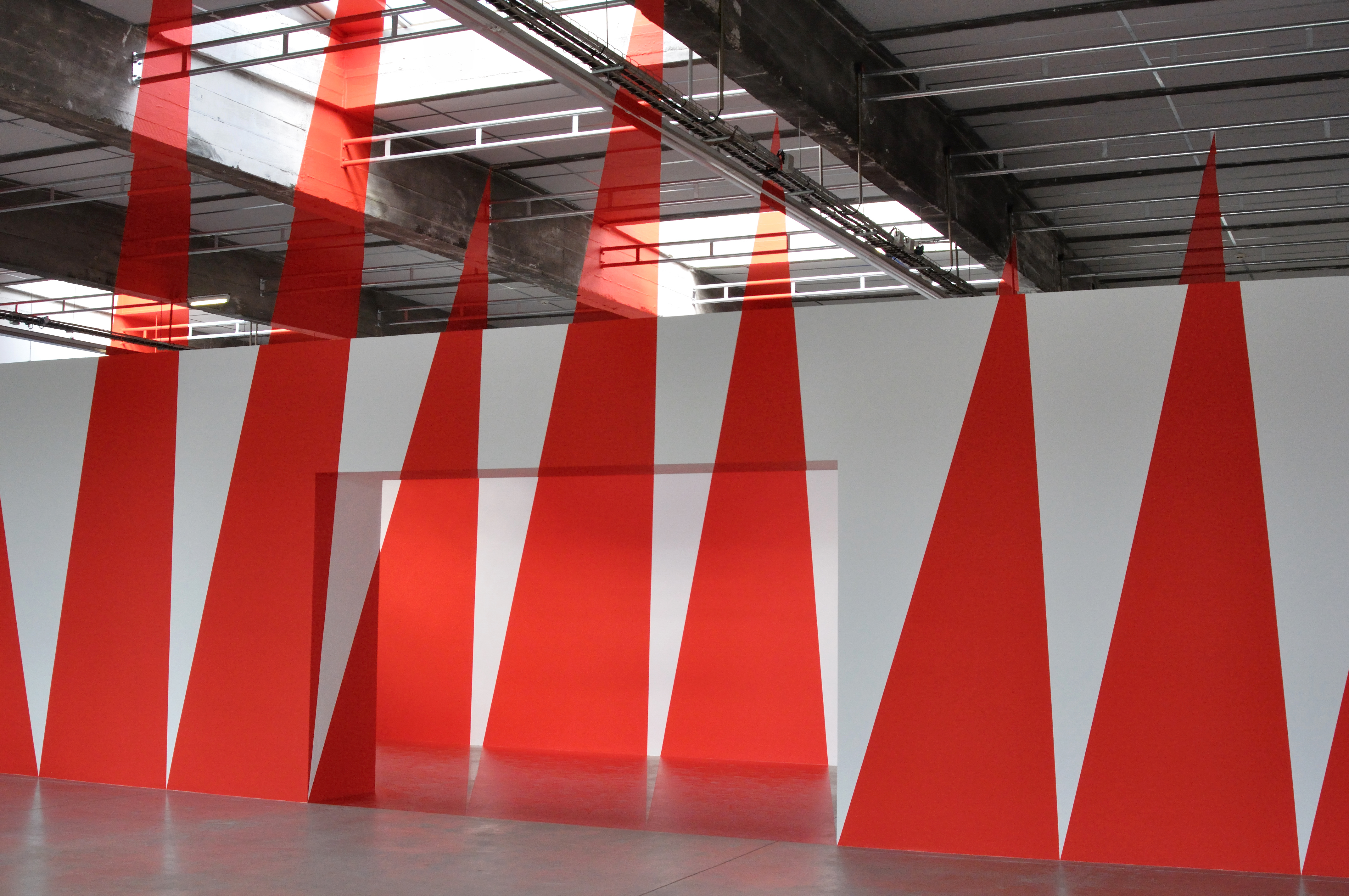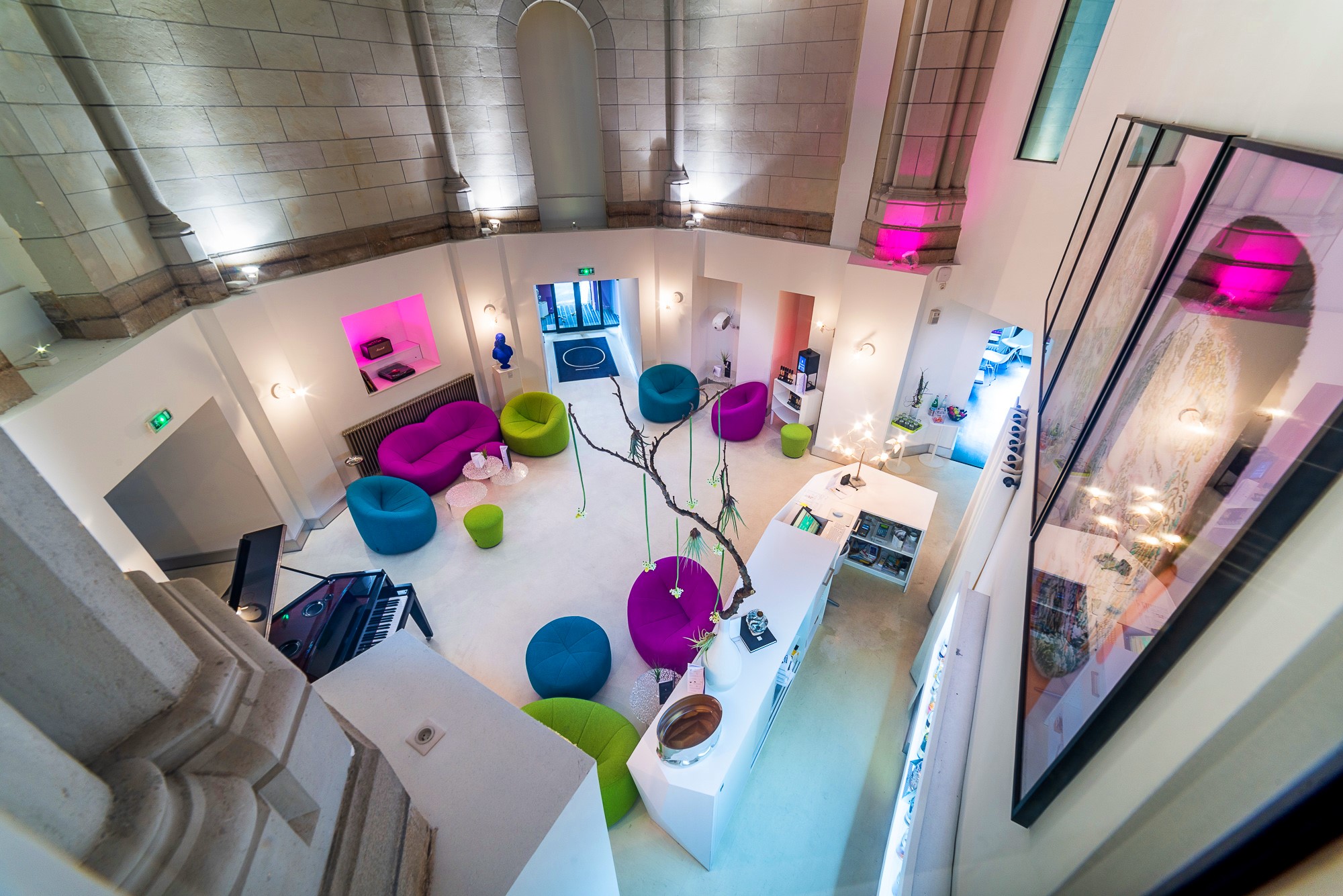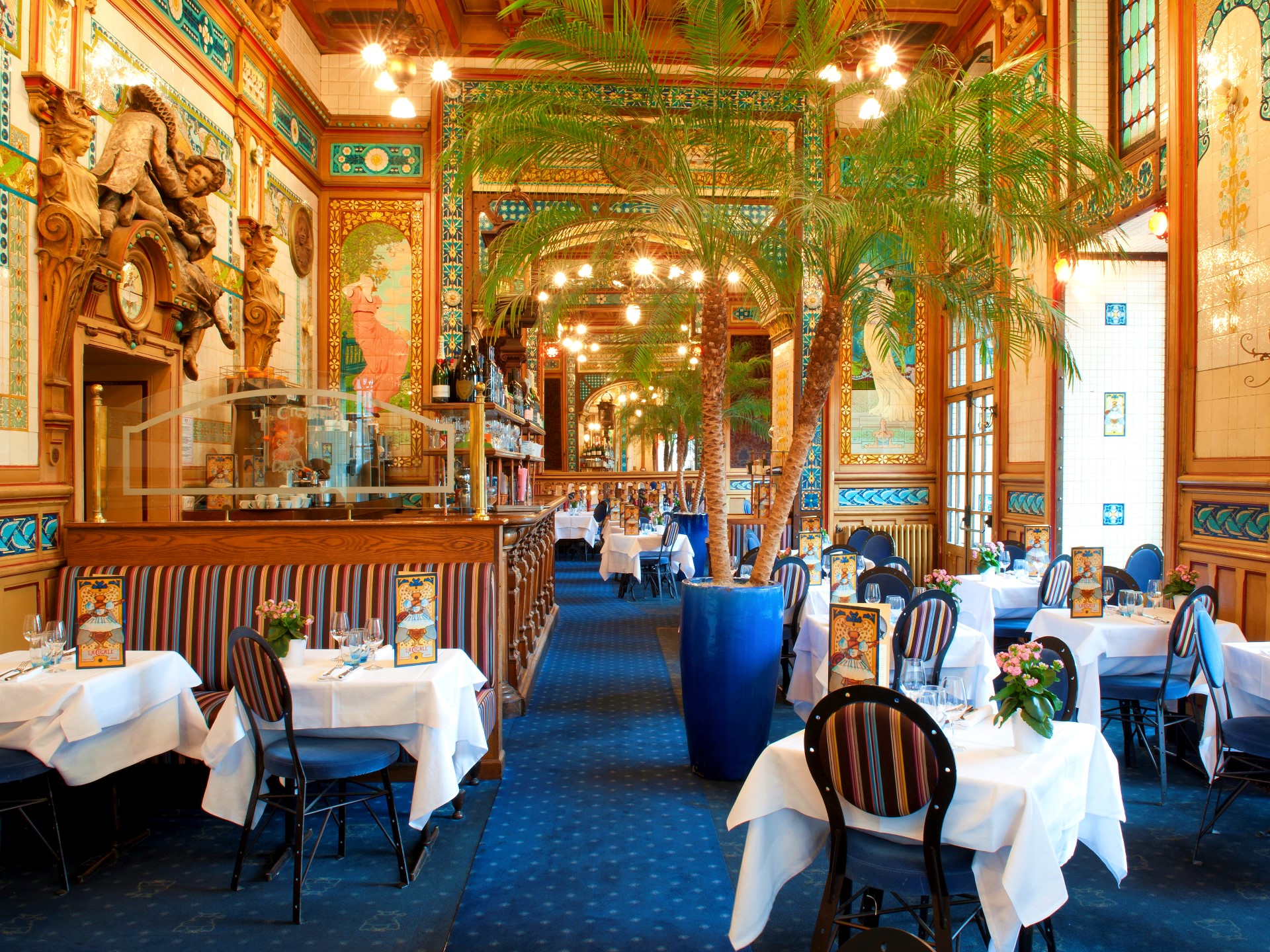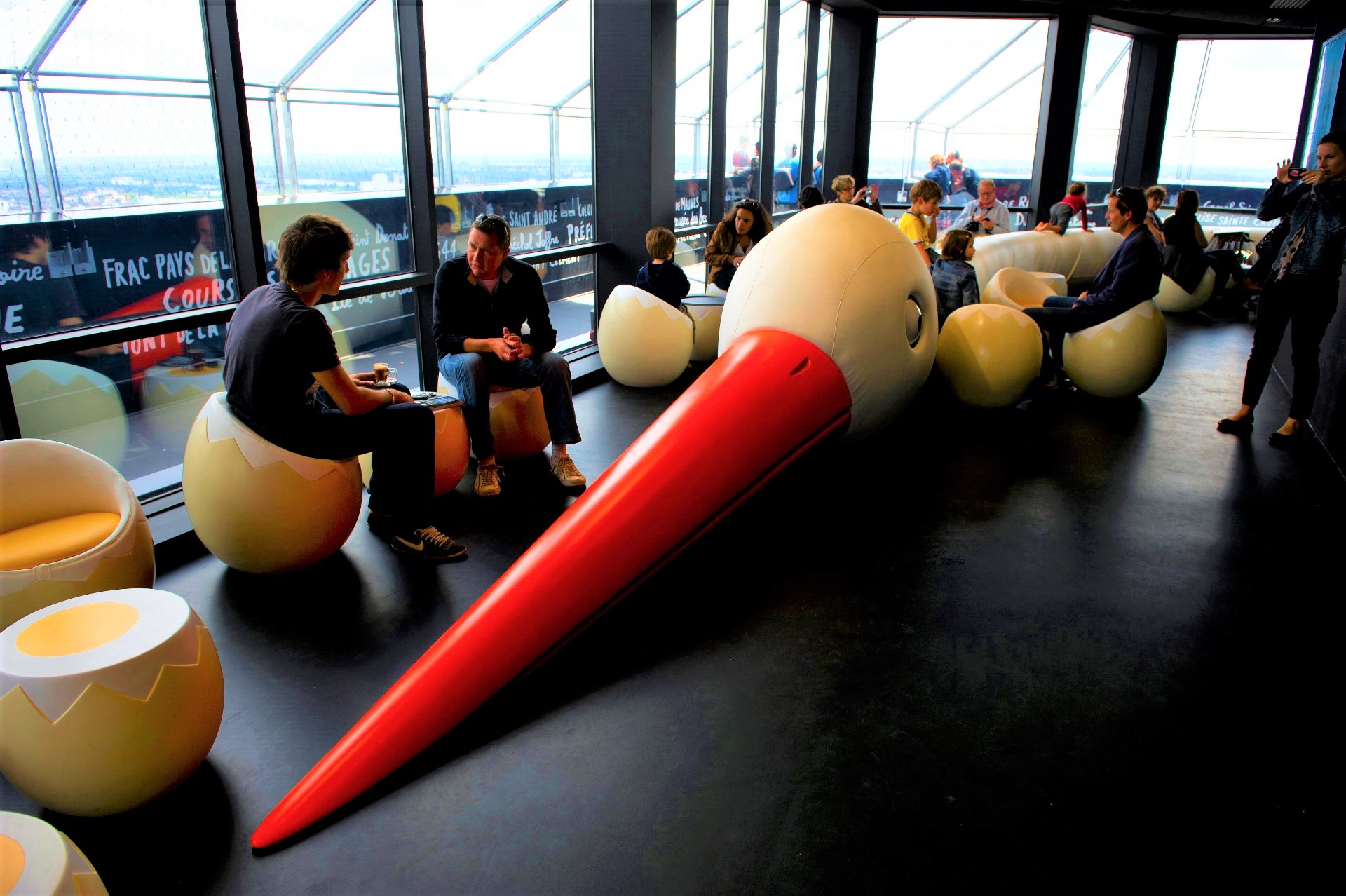Spirited and unique, the former ship-building city of Nantes is experiencing a mini-renaissance. Blessed with an impressive art, music and culture scene, and a galaxy of sumptuous eating and drinking options, this pocket-sized metropolis nudging the Atlantic coast is fizzing with an unstoppable joie de vivre.
Home to gargantuan puppets, mechanical elephants and Jules Verne, Brittany’s ex-capital is using an “epidemic of art” to carve out a compelling, one-of-a-kind narrative. Art – as most Nantes residents acknowledge – has been the city’s saving grace. Turn back 30 years and the once-thriving seaport was in a perpetual state of decay: a grey, soulless backwater suffering repercussions from the closure of its shipyards in the late 1980s.
Today, thanks in part to the transformation of the Île de Nantes into an urban laboratory of head-spinning creative projects and large-scale art installations, Nantes is now recognised as one of France’s most exciting and innovative cities.
Cultural experiences
Strap yourself in for a magical voyage through a steampunk-style universe of bizarre mechanical oddities. Based on a synthesis of sci-fi author Jules Verne’s fantastical creatures and Leonardo da Vinci’s technical drawings, a crack-team of artists, designers and engineers have rustled-up La Galerie des Machines (Parc des Chantiers) – a constantly evolving 3km-long workshop on the Île de Nantes. Kicked off in 2007 with the introduction of its astonishing 12-metre Grand Éléphant made from 45 tons of steel and wood, this world-class attraction must be seen to be believed. The majestic animal takes regular strolls along the esplanade while carrying 50 passengers who climb its spiral stairs, peer out from its canopied platforms, or hide in the secret lounge in its belly.
The latest chapter in the workshop’s journey is Le Carrousel des Mondes Marins (the Marine World’s Carousel; Parc des Chantiers), a whopping carousel on the banks of the Loire River. Consisting of three tiers, “voyagers” are taken on a subaquatic odyssey through the Ocean, the Seabed and the Abyss. Rides include giant eccentric creatures such as a manta ray, a squid, a crab and a flying fish. To cap off the experience, the Gallery’s workshops offer further insight into how the machines are constructed. Architecture in motion…
Novelist Jules Verne is unquestionably Nantes’ most famous son. His novels Journey to the Centre of the Earth and Around the World in 80 Days have taken on prophetic resonance due to their visions of modern technologies a century before their existence. Overlooking the Loire River, Musée Jules Verne (3 Rue de l’Hermitage) is a 19th-century building divided into eight themed rooms such as ‘The Start of Dreams’ and ‘Known and Unknown Worlds’. Housing an amalgam of memorabilia like hand-written manuscripts and photographs, and replicas of his inventions that include ink spots and a magic lantern with glass slides, the museum brings visitors closer to the shy and complex man who predicted the submarine and space travel.
Charged with history, Le Lieu Unique (LU; 2 Rue de la Biscuiterie) is an ex-biscuit factory turned state-of-the-art cultural centre. Conceptually it evokes a spirit of curiosity and discovery. Its expansive industrial-chic space pulls in a vast spectrum of theatre and dance productions, art and design exhibitions, live music concerts and film screenings. And if that doesn’t busy the senses, other assets of Le LU include a record shop with a sharp selection of vinyl, a boutique book shop, a restaurant with a seasonal menu, and in its basement, a decadent hammam. Unique indeed.
Comprising three storeys, Passage Pommeraye’s neo-classical shopping arcade on Rue Santeuil made its debut in 1843, and has done a brisk trade ever since. One of Nantes’ most elegant edifices, the passage’s colonnaded walkways beneath a vaulted-glass atrium are populated with plush shops such as Parisian luxury goods designer Hermès, Provençal perfumier Durance and Breton chocolatier Georges Larnicol.
Embedded in the historical heart of Nantes, Château des ducs de Bretagne’s (4 Place Marc Elder) seven towers radiate an imperial energy. Originally constructed in the 9th or 10th century, this 15th-century Gothic château is Nante’s most important historical building. Following Brittany’s integration into France in 1532, the château acted as a residence for the kings of France during their visits. Later it became a military barracks and prison where famous incarcerated residents included France’s most notorious mass murderer ‘Bluebeard’. Now a museum and exhibition centre where hi-tech meets the middle-ages, the château offers a seven-sequence immersive multi-media trip through the city’s political and cultural heritage, and hosts some excellent arts and culture exhibitions.
Escape the hum-drum for a few hours in one of France’s most fascinating botanical gardens. Established in 1860, Jardin des Plantes (Rue Stanislas Baudry), Louis XIII’s four kilometres of meticulously manicured gardens contain almost 600 fragrances and 500 varieties of flower. Japanese maple, mulberry and redwood trees jostle for space above blazing flowerbeds. Meandering paths lead to duck ponds, lakes with fountains, hedges shaped into cartoonesque characters and an atmospheric tropical hothouse heaving with cacti and palm trees.
Art galleries
Recently re-opened after a six-year hiatus for heavy renovation, Musée d’Arts de Nantes (10 Rue Georges Clemenceau) is a dashing Beaux Arts-style building in the heart of the city. Originally constructed in 1801 to showcase the city’s monumental collection of fine art paintings, it now houses works that run the gamut from the 13th to 21st centuries. Celebrated canvas-dabbers Delacroix, Watteau and Kandinsky are just some of the headline acts on display in its ocean-sized spaces.
Alongside exhibiting the creations of established regional, national and international artists, Galerie RDV’s (16 Allée Commandant Charcot) modus operandi focuses strongly on emerging contemporary artists. Acting as a creative incubator and launch pad for lesser-known or undiscovered young artists, the gallery’s two spaces exhibit a wide scope of artistic disciplines ranging from sculpture, photography, painting, lithography and video art.
On the far-flung western tip of the Île de Nantes, contemporary art space HAB Galerie (21 Quai des Antilles) elicits impressive widescreen views of the Loire River. Traces of its previous soul as a banana and pineapple warehouse still linger – albeit with a mighty zap of modern-art-gallery pizazz. Its immense open-plan space and minimalist design aesthetic of polished concrete flooring, steel beams and flash-white walls act as an empty canvas for cutting-edge installations from the art-world’s leading practitioners.
Accommodation
Sōzō Hotel (16 Rue Frédéric Cailliaud) is a stylish retreat for lovers of Art & Design. Exuding 19th-century charisma with a modern twist, its religious architecture [it is an ex-chapel] is suffused with opulent design features. Domed ceilings and stained-glass windows merge with luminous furnishings, glowing lighting and flashy cartoon art.
Adjacent to the Passage de Pomeraye, Hotel Mercure Nantes Passage de Pommeraye (2 Rue Boileau) greets you with a gust of design eloquence. Snazzy modern décor flows throughout the building, and the lobby and common areas are laden with unique contemporary art pieces. Rooms and suites possess a crisp, calm and cosy ambiance.
Hotel Saint Daniel (4 Rue de Bouffay) is a simple no-frills hotel that puts you at the centre of things. Lodged in the bosom of medieval Nantes in the hopping Bouffay district, it’s the perfect bolthole for those wishing to feel the pulse of Nantes night-life. If you’re more concerned with making your stay in Nantes economical, and with no need to be in close proximity to the downtown razzmatazz, Originals Nantes Saint Herblain (1 Rue des Pilliers de la Chauvinière) is just the ticket. Staff are attentive and professional. Rooms are small, fresh and modern.
Restaurants, bars & cafes
La Cigale (4 Place Graslin) was once the stomping ground of the surrealist movement, and film location for French New Wave flicks like Jacques Demy’s Lola. This listed art-nouveau knockout sits at the upper echelons of Nantes’ restaurant scene. Positively dripping with glamour, its gilded frescoes and ornate mosaics gleam above splendid banquet furniture. Guests dine-out on expertly prepared French classics such as magret de canard (sliced duck breast), beef tartare or blanquette de veau with only the finest accoutrements. Exuberant savoir faire.
The Bretons are the proud inventors of the crêpe – and Nantes (Brittany’s ex-capital), has retained the tradition with true panache. Local crêpe connoisseurs Heb-Ken (5 Rue de Guérande) provide an appetising selection of buckwheat galettes and sweet crêpes. Try the classic crêpe salée with eggs, ham and oozing cheese, and also the crêpe sucre with bubbling chocolate sauce and a sprinkling of coconut flakes.
One of the most authentic wine bar experiences city-wide, Le Jéroboam (21 Rue Léon Blum) is a great place to mix with friendly locals and to sample top quality vintages. The menu is crammed with 80 varieties of France’s beloved grape, and offers enticing gastro-combos such as curried fish and raisins with citrus onion chutney, and charcuterie platters stacked with cheeses and cold cuts.
Vue du Monde’s (18 Rue Armand Brossard) cherry red-fronted restaurant prides itself on its borderless menu. The creation of Géraldine and Émilie – two Bretons whose journeys across the world inspired the culinary venture – the menu is determined to take diners’ taste buds on an intrepid tour of the globe. Offering five international brunches, and fusion dishes like crab and prawn with raman noodles and lime sauce, chicken and chorizo gumbo with roasted almonds, or quail’s eggs with curry sauce, Vue du Monde is a must for anyone who considers food an adventure.
High in the Nantes sky at the zenith of the Tour de Bretagne, Le Nid (The Nest; Place de Bretagne) doubles as a bar and interactive art installation. Themed upon a colossal white bird – half stork, half heron – who dozily surveys the city’s panorama, the bar operates from within its wings, and the bird’s giant eggshells convert into armchairs with yolk-yellow cushions. DJs get busy on the decks spinning electro-funk and disco-house Thursdays from 10pm. Live-music jam sessions from rock, pop and hip-hop to jazz, folk and blues strike-up Sundays from 7pm.
With intimate lighting, and live soul, jazz and funk sessions, Melocotton’s (9 Rue de l’Héronnière) down-to-earth and amiable character attracts a diverse clientele looking to lounge, mingle and groove. Famed for its absinthe-based drinks and traditionally made terrine (type of French paté made with mixed meats, egg and herbs), Le Melo – as it is affectionately referred to by locals – is a cosy music-loving corner of Nantes.
Originally a portside banana warehouse on Île de Nantes, Hangar à Bananes (21 Quai des Antilles) is by day a multi-disciplinary cultural site that combines theatres, art galleries and restaurants. By night it transforms into a throbbing party hub. A network of trendy bars and bouncing music joints line the Loire riverside, where spritely Nantais keep the party cooking.
